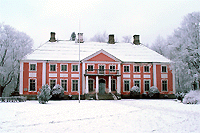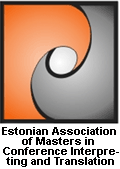Previous part (previous style)
 The Baroque style dominated in Estonia from the middle of the 17th century until the second half of the 18th century when it began to blend with the stricter elements of
Classicism.
The Estonian Baroque was never characterized by rich décor and details but by its more modest form, which originated from the Netherlands and reached Estonia through Sweden.
The Baroque style dominated in Estonia from the middle of the 17th century until the second half of the 18th century when it began to blend with the stricter elements of
Classicism.
The Estonian Baroque was never characterized by rich décor and details but by its more modest form, which originated from the Netherlands and reached Estonia through Sweden.
The Estonian Baroque is characterized by stepped wall and roof surfaces (eg. central projections of the facade, hip roofs, etc). Small-pane windows were common (the pouring of big panes was not yet mastered). Wooden buildings had upright clapboard facades and high and steep roofs.
 Roofs were often designed as semi-hip roofs, in order to let more light into the attic. The interior was dominated by dark colours and paintings on the walls and beam ceilings (preserved in the vestibule of
Albu manor).
Roofs were often designed as semi-hip roofs, in order to let more light into the attic. The interior was dominated by dark colours and paintings on the walls and beam ceilings (preserved in the vestibule of
Albu manor).
In their planning, many Baroque buildings were Old Baltic type manor houses with the mantel chimney in the middle. Starting from the 17th century, two-storey palace-like buildings started to spread. The earliest preserved of them is
Maardu,
built in the 1660s.
 Examples of preserved Old Baltic type Baroque wooden manor houses:
Riidaja,
Vana-Harmi,
Habaja,
Keskvere,
Väike-Lähtru (preserved partly and in rebuilt shape)
Suure-Rõude,
Loodi,
Käru old manor house and
Tori (in Pärnu county).
Examples of preserved Old Baltic type Baroque wooden manor houses:
Riidaja,
Vana-Harmi,
Habaja,
Keskvere,
Väike-Lähtru (preserved partly and in rebuilt shape)
Suure-Rõude,
Loodi,
Käru old manor house and
Tori (in Pärnu county).
17th century preserved palace-like Baroque manor houses:
Maardu,
Palmse,
Aa (two last ones partially rebuilt),
Kloostri (in ruins)
Vihula so-called old manor house (later bailiff's house)
and assumably
Tuudi.
18th century palace-like preserved buildings in pure Baroque style:
Ahja,
Luua (later rebuilt)
Hiiu-Suuremõisa,
Ohtu,
Kõo,
Õisu (facade later partly rebuilt),
Maidla (in Virumaa county),
Sargvere,
Ääsmäe,
Saue (two last ones with early classicistivc elements),
Päärdu (the latest by the erecting time).
Next part (next style)










